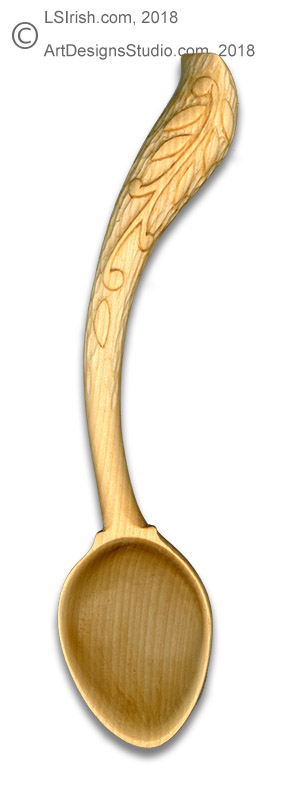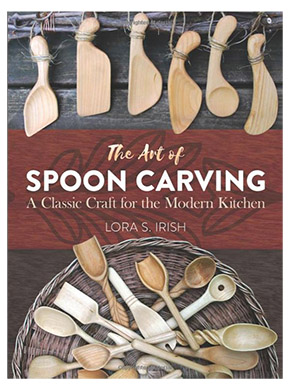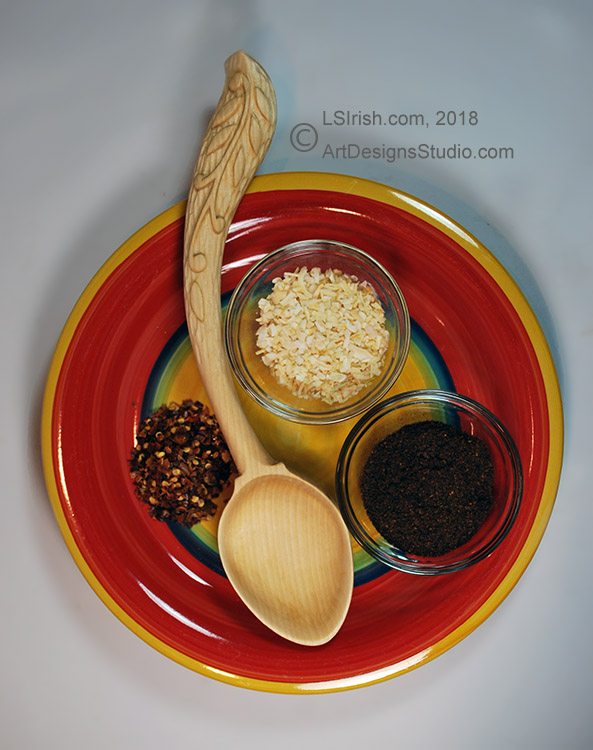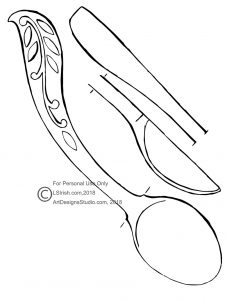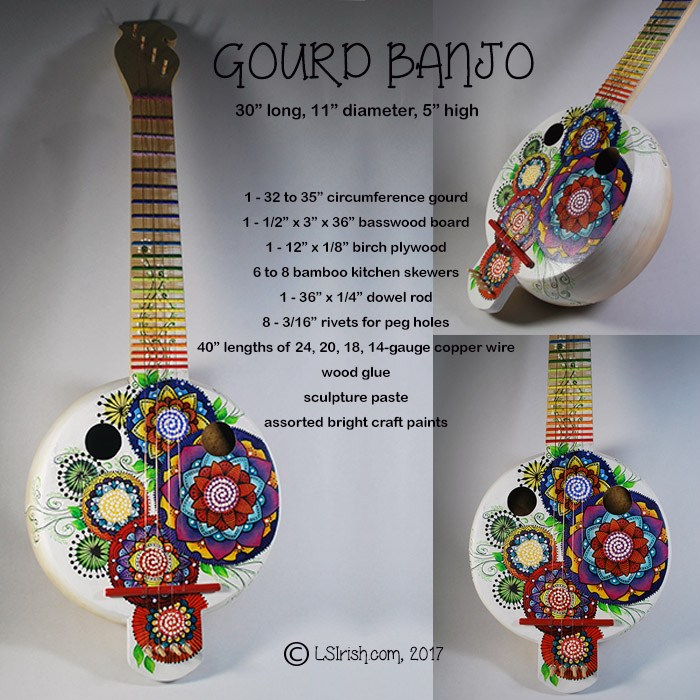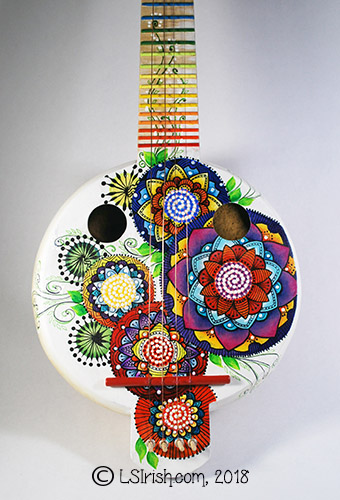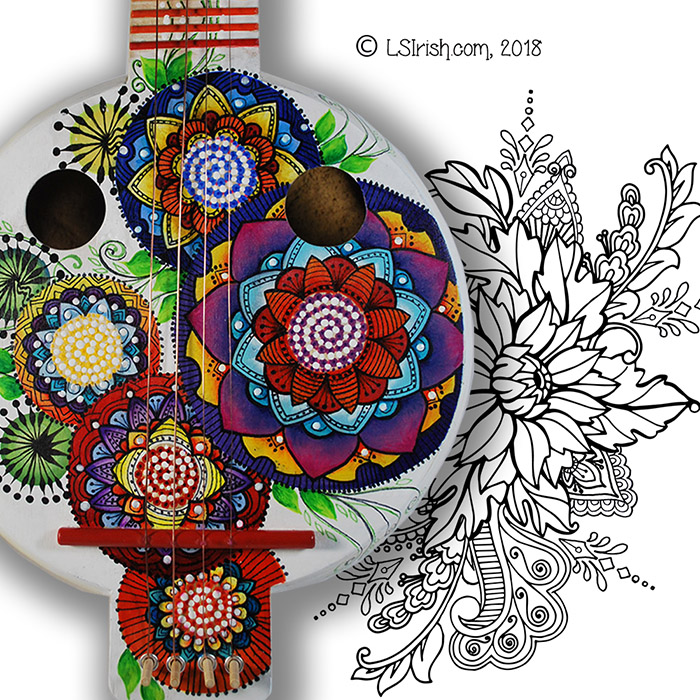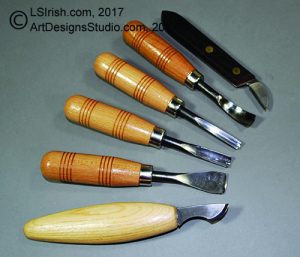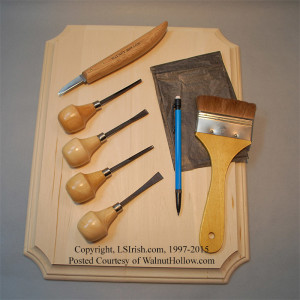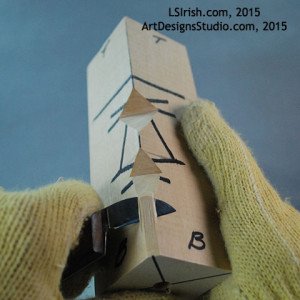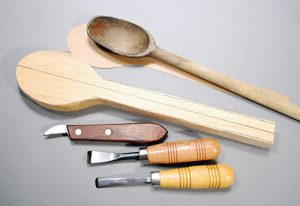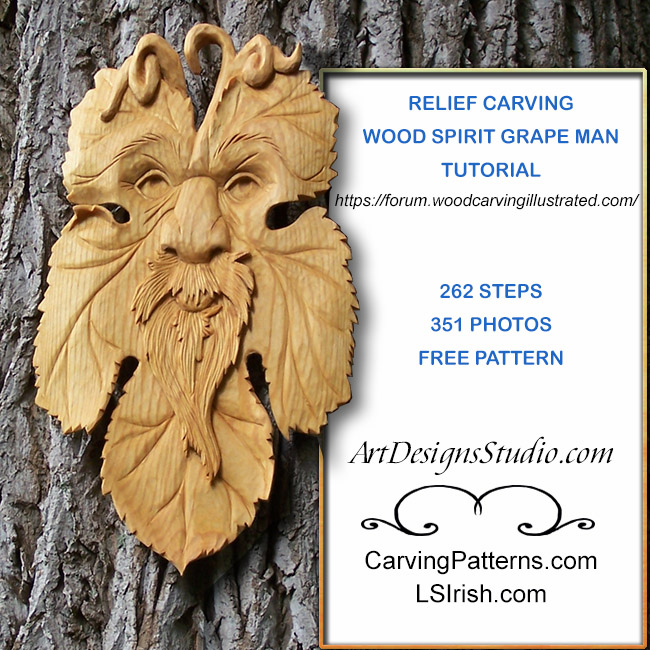Which carving knife is right for you?
In an Amazon review a reader was distressed that I don’t teach spoon carving using a Sloyd knife, a very traditional knife used in this craft. I believe this is a fair and honest question that I could address here.
There are many different styles and shapes for the straight cutting knife that we often group under the name of ‘bench knives’. Some bench knives have long blades that may extend up to 4″ from the handle, others as chip knives may only have a 1″ long blade. Some blades are flat – straight – along the cutting edge from handle to knife tip while others may have a curve at the top 1/3 of the blade. Some are sharpened on one side only while others are sharpened on both sides.
While Sloyd knives are a traditional, Old World technique tool for spoon carving, why don’t I use or recommend them … because they don’t fit my hand! More at the bottom of this page ….
What is important in your choice of bench knives?
There are two specific aspects to your bench knife that determine which is best for you.
1. The quality of steel which determines the quality of the sharpened edge that you can achieve and keep during a carving session.
Cheap steep will never sharpen to a bright, clean edge and if you do achieve a usable sharpened edge that edge will not last very long during any carving session. Be prepared to pay about the same amount for one good bench knife as you would a full 5 to 6 piece beginner’s carving set.
2. The fit of the handle inside of your hand.
No knife, no matter how wonderful the steel, who manufactured it, how sharp an edge it keeps, or how it has been traditionally used in wood carving is worth a tin dime if it doesn’t properly rest inside your hand.
Notice here that I did not mention the piece or project that you are carving or the length of the bench knife blade. A good bench knife, one with high quality steel and a proper fit, will carve about 90% of the straight cuts that you need for any project. While many wood carvers have a variety of bench knives in their kits, most return over and over again to just one or two favorite tools.
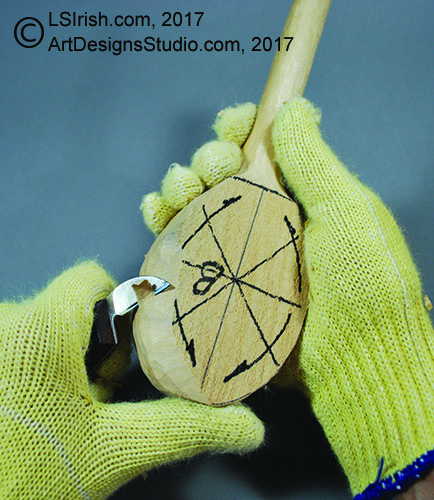 What length of bench knife do you need?
What length of bench knife do you need?
For most carving projects today your bench knife only needs to make a clean slice of wood 1/2″ or less wide. If you need to take larger slices then you most likely need to move to a draw knife. Today’s carvers are working with milled wood that has been kiln dried. The bark has already been removed and the heartwood cut away from the blank. Few of us need to rough cut a split piece of bark wood that needs to be dressed down to a flat, squarish shape before we begin carving either of which could require a longer blade length.
Let’s return for a moment to the discussion about using a Sloyd knife as compared to a standard bench knife or chip carving knife. A Sloyd knife is wonderful if you are de-barking a long walking stick that you have cut from a sapling. The extra long blade does allow you to glide the cutting edge down the sapling, releasing very long strips of bark. This is very important if you are removing the bark after the stick has dried.
You can also debark while the stick is green using a shorter bladed knife by lifting the top edge of the bark and pulling the bark off the stick.
If I am carving details in my work, as shaping the side of a spoon bowl or cutting the facial planes of a wood spirit that long blade on the Sloyd pushes my hand several inches away from where I am cutting. A short blade, as a 1″ chip blade, places my hand, and therefore my control of the cut, right at the point of the cut.
For me this is as important as the quality of the steel. If a knife does not properly fit your hand I will guarantee that it will spend most of your carving life in the box of your tool kit … quietly rusting away!!
A well-fitting knife handle lays across your palm between the major fold wrinkle of the fingers and the major fold wrinkle of the thumb palm. The fattest part of your thumb rests nicely into this space, which means that the fattest width of your thumb is an excellent gauge for the thickness of your bench knife handle.
In the photo, right, the bottom left knife handle is the most appropriate for the size of my hand. The top right shows a handle that is too wide, and the bottom right one that is too narrow.
When you roll your hand around the handle, the tips of your long and ring finger should just lie about 1/4″ away or just against the side of the thumb palm. This fit lets you have free motion of your fingers, your thumb, and your wrist during any cut – not too tight, and not too open. Your fingers hold the knife handle to the palm without the need of excess pressure.
Too narrow or to thin a handle and your finger tips will need to curve into a clenched shape to hold the knife steady. That clench causes extra tension in the hand which over time becomes tiring.
Too wide a handle and your finger tips will not touch the thumb palm area. With this grip you need extra pressure to steady the knife through the cuts. Again, this can cause fatigue and stress on your hands.
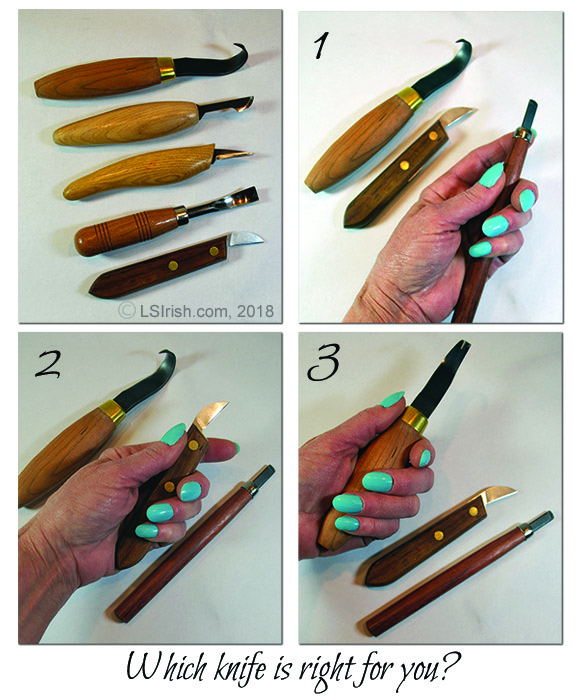 Looking at the first photo on this post.
Looking at the first photo on this post.
Upper left shows five different tools and knives that are commonly used in spoon carving. From top to bottom are a FlexCut Carving Hook, a FlexCut hooked skew, a FlexCut bench knife, a wide bent round gouge, and a Moor Chip Carving knife.
1 Upper right – Shows a bull nose chisel with a narrow handle. The handle sets forward in my hand, allowing the fingers to move the tip of the blade through detailing work.
2 Lower left – Shows a Large chip carving knife that fits my hand perfectly. The finger roll completely around the handle without the need for extra tension to secure the handle in my palm.
3 Lower right – Shows a large handled carving hook which is too large for a good fitting grip for my hand. The handle has been pushed into the palm area and my finger need a tighter grip to secure the handle during use.
Old World v. Modern Day
Yes, sloyd knives, carving hooks, and scoops are traditionally used in the Old World style of spoon carving. Traditionally these knives and tools have extra wide handles as shown in the top three tools in the upper left photo above. Those wide handles were made to fit a medium to large man’s hand, because until about 100 years old traditionally woodworking and wood carving was done by men.
Today what is necessary is having and using a bench knife that fits your hand properly. Today it is reasonable to estimate that one half of all carvers are women, with smaller hands and therefore narrower grips than men.
While writing this and talking with my husband, a long time woodworker, we did a small comparison. His hand, a medium-sized man’s hand, measures 7 3/4″ long from the finger tip to the wrist bone of the thumb … mine measures 6 1/2″. His hand measures 3 3/8″ wide across the knuckles, mine measures 2 7/8″. While his hand is large enough to comfortable hold a Sloyd knife, mine simply isn’t.
Humans are a dimorphic species – males tend to be about 10% larger than females. Therefore in general what was used for centuries by a male population of woodworkers and wood carvers may not be appropriate for today’s mix of hobby carvers.
Conclusion
It’s not what knife you use, it’s not about a particular manufacturer’ or Old World style … it’s all about whether that knife fits YOUR hand.
PS … And that is why I never recommend ergonomic grip tool handles as they only fit one person’s hand, he who made the handle mold in the first place.

